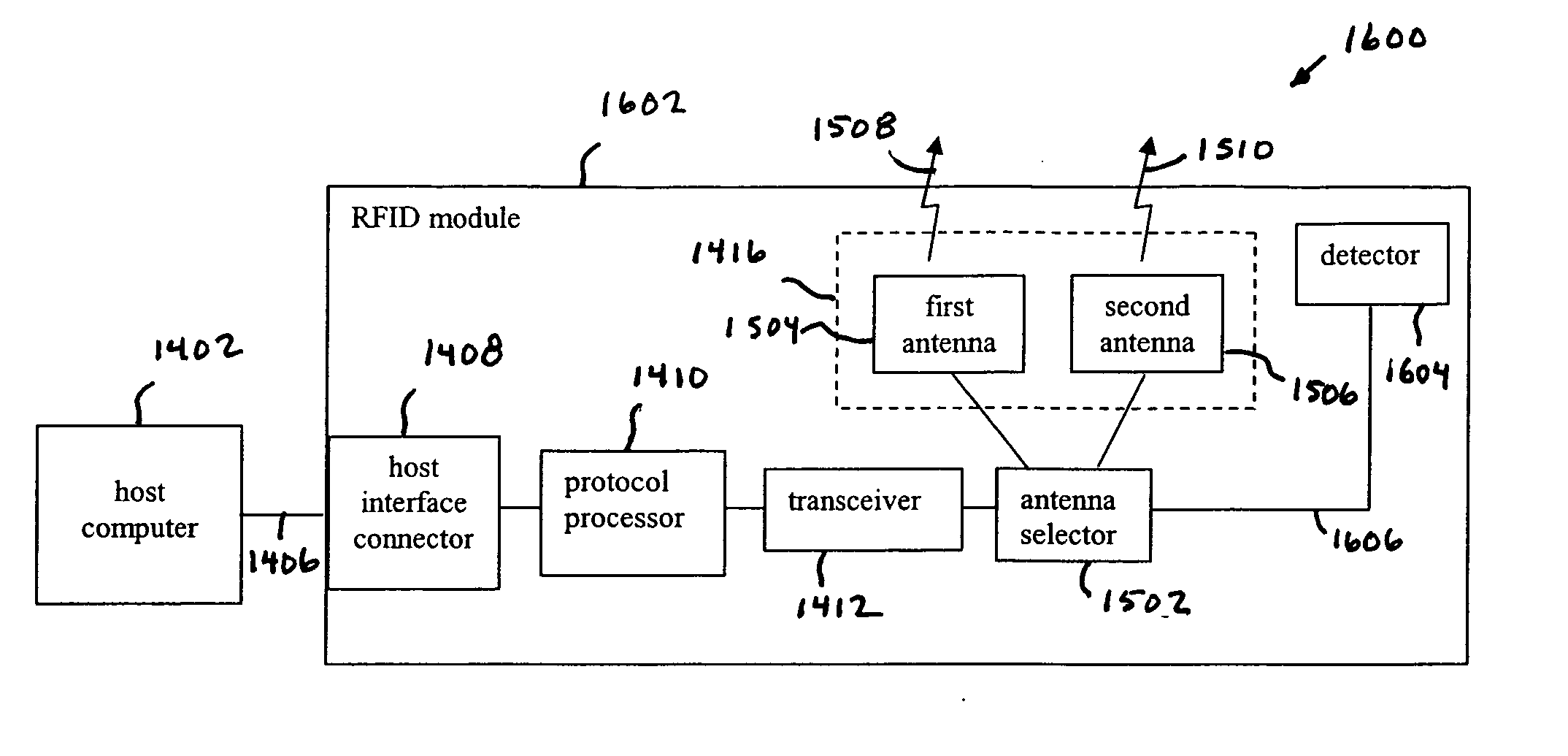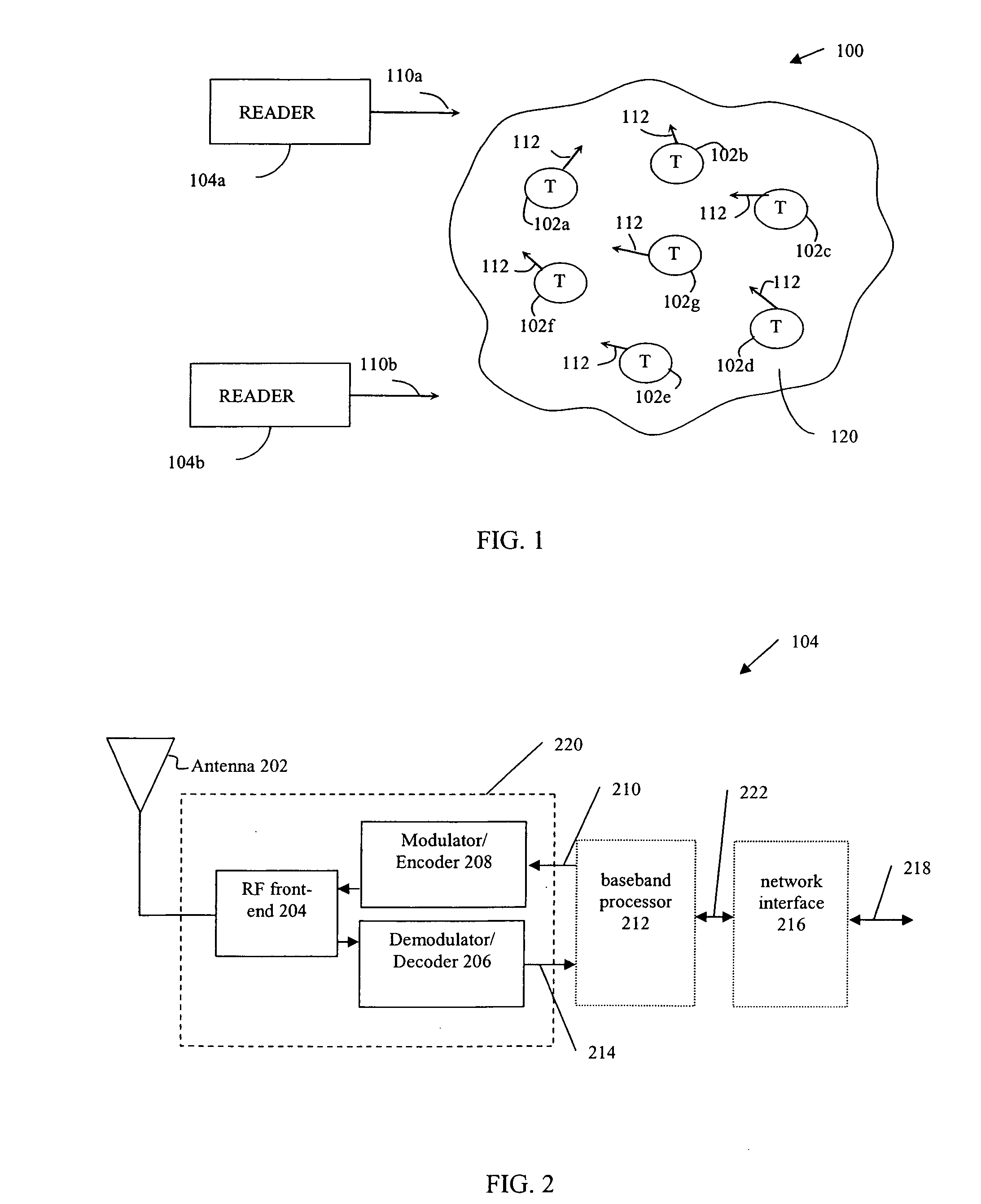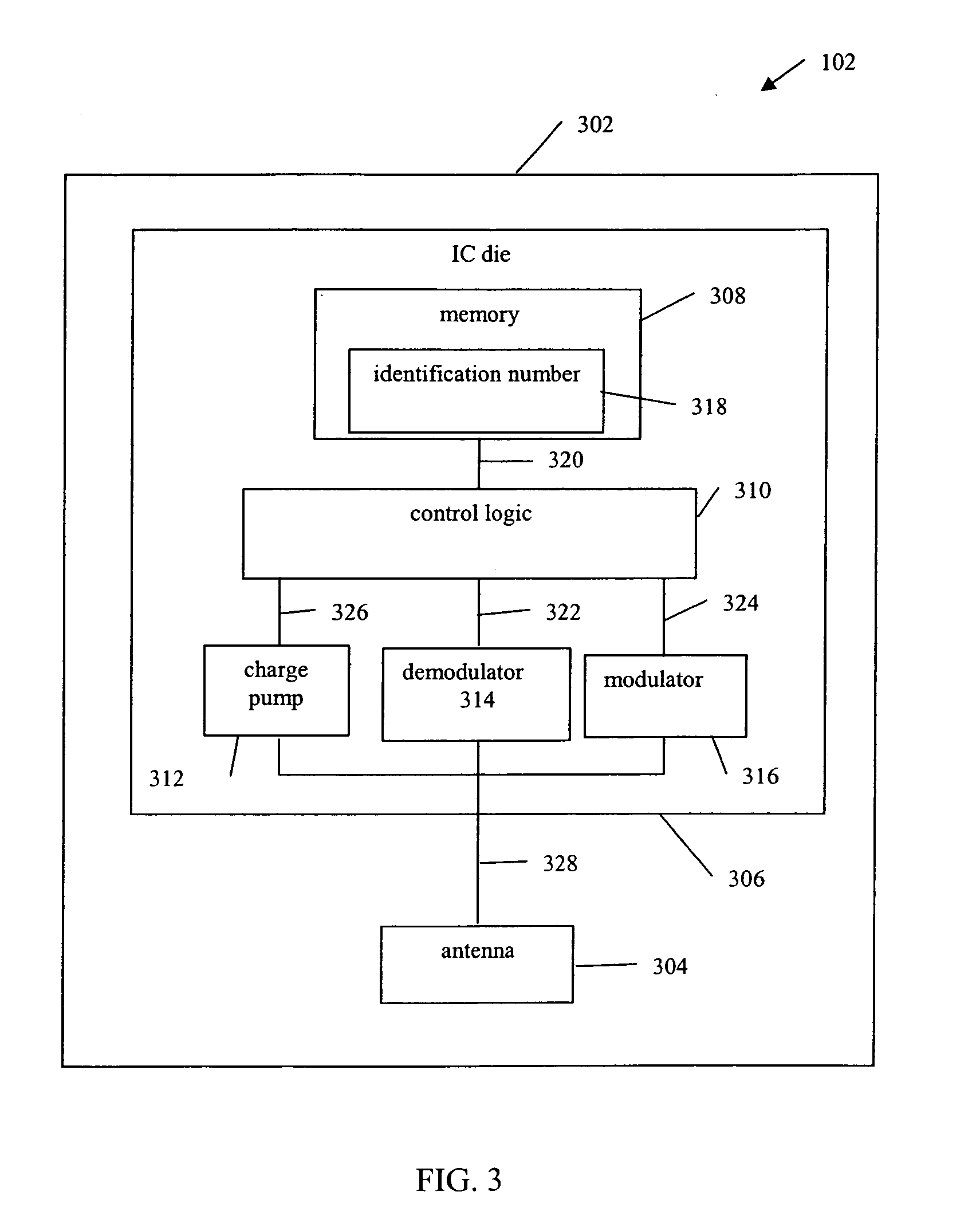Single frequency low power RFID device
a low-power, single-frequency technology, applied in the field of radio frequency identification (rfid) technology, can solve the problems of difficulty in determining which box was which, the current rfid system suffers from various problems, and the rfid reader suffers from high costs associated with programmable frequency synthesizers, power amplifiers, and high-speed high-resolution digitizers. achieve the effect of compact reader design and enhance short-range reads of tags
- Summary
- Abstract
- Description
- Claims
- Application Information
AI Technical Summary
Benefits of technology
Problems solved by technology
Method used
Image
Examples
example embodiments
[0073]Embodiments are described herein for improved readers. These embodiments can be implemented anywhere that readers and tags are used. For example, embodiments can be implemented in a commercial or industrial environment, such as in a warehouse, a factory, a business, or store, and in a military or other non-commercial environment.
[0074]In embodiment, transceivers are described that are suitable for RFID reader devices. The transceivers are very compact, and thus can be fit into small form factors. For example, in one embodiment, a transceiver is incorporated into a RFID module that is an attachable accessory for a host computer, such as a mobile handheld computer.
[0075]In embodiments, various types of oscillators can be used to generate a carrier frequency for the transceiver. In example transceivers described below, a surface acoustic wave (SAW) device is described as generating a carrier frequency for a transceiver, and in some embodiments also performs a modulating function....
example system embodiments
[0139]As described above, embodiments of the present invention can be implemented in many forms, including in RFID readers, in attachable RFID module accessories, in barcode readers, in mobile devices, and in other devices. Some further example system implementations are described below. These embodiments may be adapted, modified, and combined in any manner, as would be apparent to persons skilled in the relevant art(s).
[0140]For instance, FIG. 14 shows a RFID communication system 1400, according to an example embodiment of the present invention. As shown in FIG. 14, system 1400 includes a host computer 1402 and a RFID module 1404. RFID module 1404 includes RFID functionality for communicating with RFID tags. RFID module 1404 may be implemented in a reader, in an RFID module, or other device. Host computer 1402 may be computer system, similar to host 1002 described above. Host computer 1402 may be implemented in a desktop computer, server, mobile handheld computer (e.g., a PDA), a b...
embodiments
Example Advantages of Embodiments
[0160]Numerous advantages are provided by embodiments of the present invention, some of which were described above. Example advantages are described as follows that may or may not have been described above. For example, embodiments have a small size that is easy to integrate into mobile terminals. For example, ASIC and SAW devices can be integrated into a laser scanner engine. Furthermore, the reader circuits can make use of existing laser scanner ASICs, such as being incorporated into the same ASIC, or interfaced with the scanner ASIC in a convenient manner. The reader transceiver circuits use very low power. For example, the power used is approximately the same as used by a laser scanner. The reader embodiments are very light weight. Embodiments can be integrated into a SANDISK™ (SD) format card to upgrade numerous existing products and devices that are compatible with SD cards. Furthermore, due to reduced interference, embodiments allow more RFID ...
PUM
 Login to View More
Login to View More Abstract
Description
Claims
Application Information
 Login to View More
Login to View More - R&D
- Intellectual Property
- Life Sciences
- Materials
- Tech Scout
- Unparalleled Data Quality
- Higher Quality Content
- 60% Fewer Hallucinations
Browse by: Latest US Patents, China's latest patents, Technical Efficacy Thesaurus, Application Domain, Technology Topic, Popular Technical Reports.
© 2025 PatSnap. All rights reserved.Legal|Privacy policy|Modern Slavery Act Transparency Statement|Sitemap|About US| Contact US: help@patsnap.com



